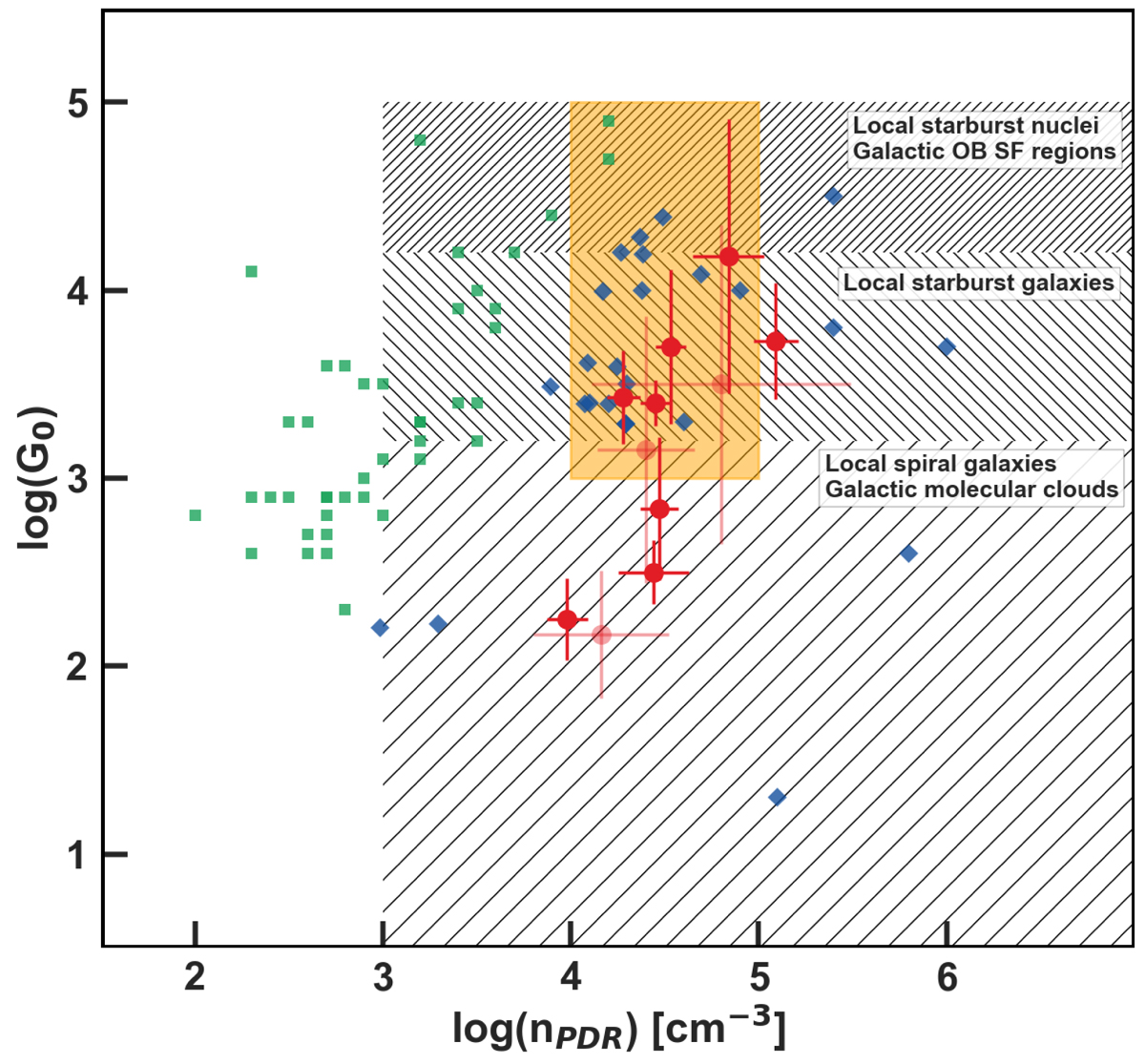Fig. 9.

Results of the PDR modeling of the Planck’s dusty GEMS using line luminosity ratios of CO, [C I], and [C II] (red points, see further details in the text), with error bars showing the 1σ uncertainties on the best-fitting values. The average PDR densities, nPDR, correspond to number densities of hydrogen nuclei and the FUV radiation fields, G0, are given in Habing units (1.6 × 10−3 erg cm−2 s−1). The sources without [C I](1–0) detection are plotted in light red. We compare with other SMGs in the literature (blue points, Cox et al. 2011; Danielson et al. 2011; Valtchanov et al. 2011; Alaghband-Zadeh et al. 2013; Huynh et al. 2014; Rawle et al. 2014; Bothwell et al. 2017), with the regimes of local normal star-forming galaxies (green points, Malhotra et al. 2001), and local ULIRGs (orange region, Davies et al. 2003), and with the average position of nearby galaxy populations and Galactic regions inferred in Stacey et al. (1991) using [C II]/CO(1–0) line ratios (hatched regions). The physical conditions in the GEMS closely resemble those of local ULIRGs and starbursts, with very similar densities in the range nPDR = 104–105 cm−3. The PDR models also suggest that some Planck’s dusty GEMS are illuminated by lower FUV radiation fields, more typical of local spiral galaxies and molecular clouds in the Milky Way.
Current usage metrics show cumulative count of Article Views (full-text article views including HTML views, PDF and ePub downloads, according to the available data) and Abstracts Views on Vision4Press platform.
Data correspond to usage on the plateform after 2015. The current usage metrics is available 48-96 hours after online publication and is updated daily on week days.
Initial download of the metrics may take a while.


